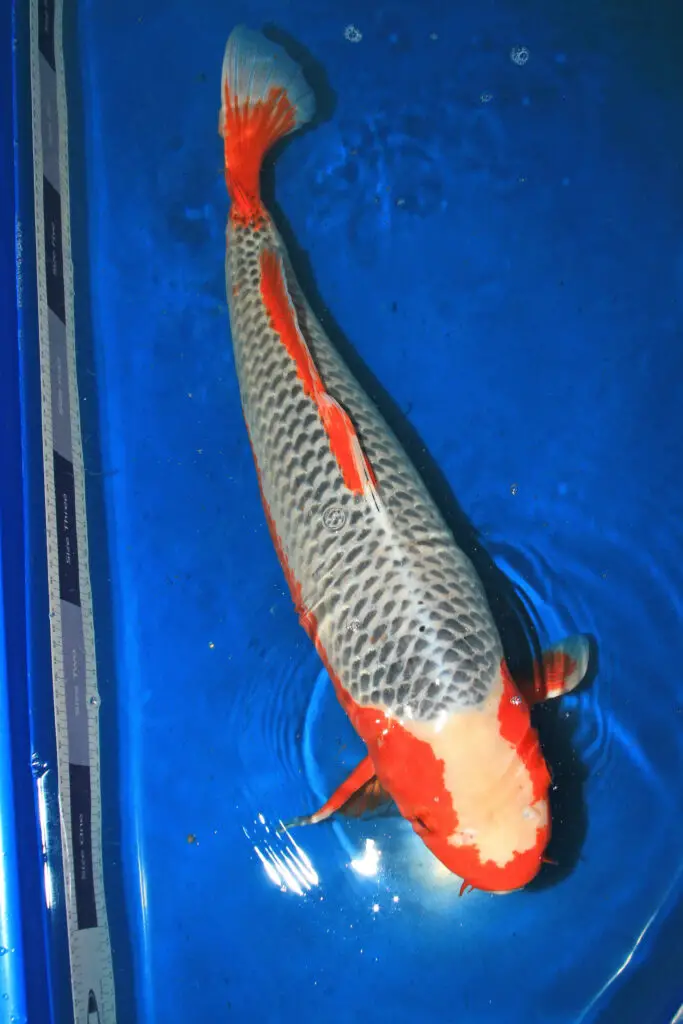
Although koi fish may look the same or do not sport distinct characteristics to the untrained eye, there are hundreds of different koi breeds with distinctive features, needs, and temperaments; one of the most popular koi variants is Asagi koi.
Asagi koi is one of the oldest variants of koi, with their direct lineage to wild carp, making them excellent choices during the early years of domesticating and breeding koi. Although there are various types of Asagi koi, they all sport a blue-black netted pattern and reticulation on their backs.
To understand more about Asagi koi, this guide will explore the history of Asagi koi, their distinct features, the different variants of Asagi koi, the rarity of different Asagi koi variants, the cost of different Asagi koi variants, how to care for Asagi koi, and how to selectively breed Asagi koi.
Pro Tip: If you’re tired of wasting money and making costly mistakes on the koi-keeping hobby or are thinking about buying koi fish but don’t know where to start, I strongly suggest you check out this ebook. I recently read this ebook, and it contains SO much useful information, such as:
- 3 proven steps to identify koi fish diseases
- WARNING: 3 things you should NEVER do when it comes to caring for koi
- When to seek professional help when it comes to looking after your koi
The Background And History Of Asagi Koi
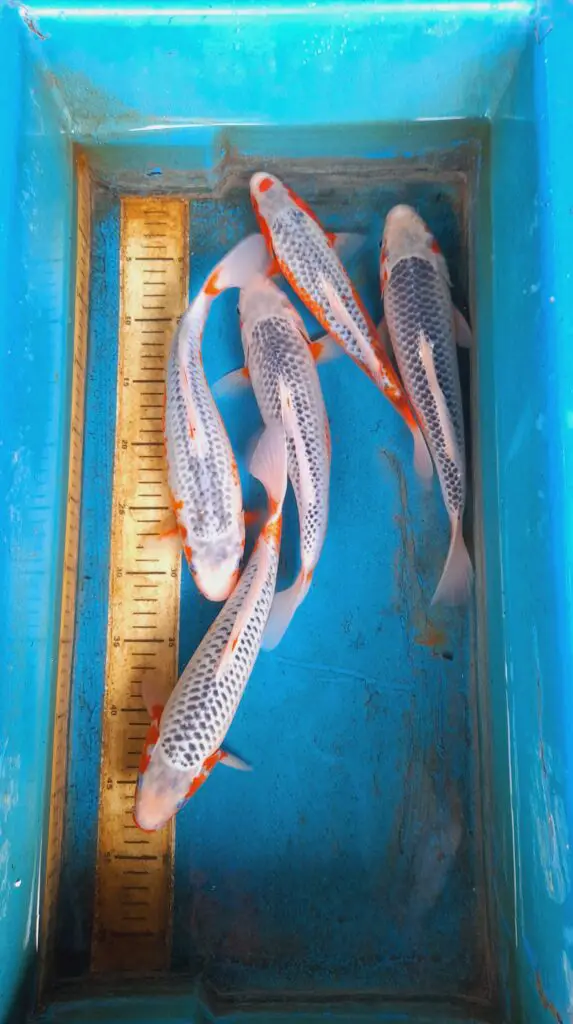
Although there is some speculation about the meaning behind the word “Asagi,” the consensus is that it means blue or indigo in reference to the scales of the Asagi koi.
Another theory is that it translates to “setting sun” as the orange that appears on the fins and head of the Asagi koi (“the sun”), in stark contrast to the deep blue-black scales on their back (“the sky”), thus resembling a setting sun.
Regardless of the translation of Asagi, they have been identified as the first brocaded carp. Consequently, many of the newer koi varieties derive from cross-breeding generations with Asagi koi.
Asagi koi are believed to be the direct descendants of “magoi” or “true carp.” Hence their similarities with wild carp in comparison to other koi variants. Consequently, historical and DNA records suggest that Asagi koi came to prominence in the 1700s, whereafter ornamental breeding of Asagi koi began in approximately 1868.
Therefore, some people overlook Asagi koi, as they are considered dull in color and pattern compared to more vibrant variants of koi. However, other people feel their darker shades provide a welcome contrast to more colorful koi variants.
Furthermore, Asagi koi are known to grow pretty large while remaining docile and even-tempered pond mates to other koi. Consequently, Asagi koi are seldom aggressive to other animals in ponds, nor are they skittish around people.
How To Identify And Judge Asagi Koi?
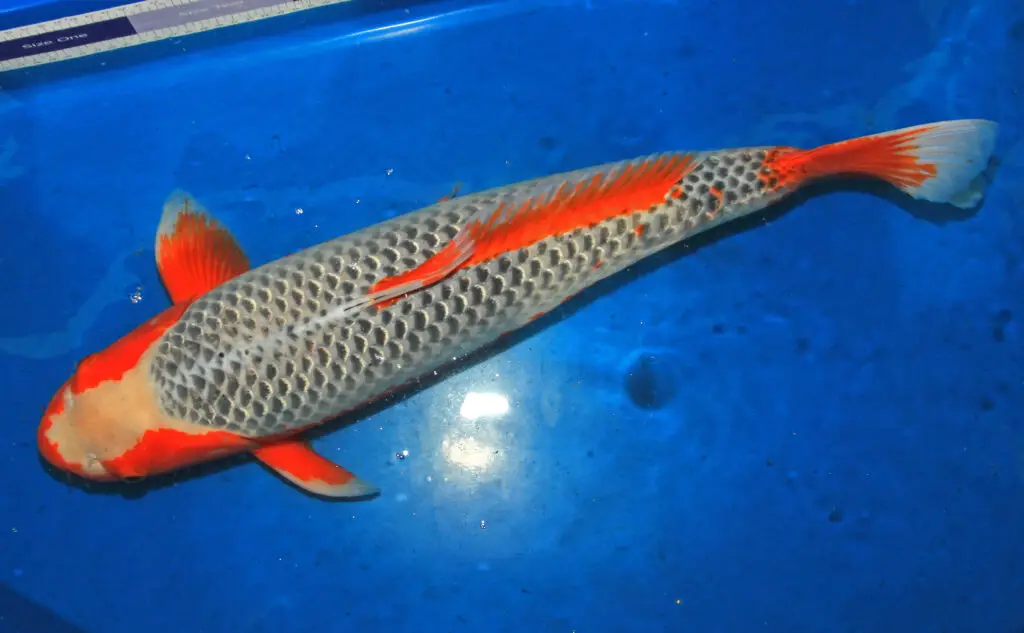
To identify Asagi koi and to judge the quality of a juvenile Asagi koi before purchasing one, there are some key features you need to pay attention to:
- Asagi koi scalation,
- Asagai koi color and patterns,
- Asagi koi pectoral fins,
- Asagi koi sides,
- Asagi koi heads.
Asagi Koi Scalation
As arguably their most distinguishable feature, the scales of Asagi koi should be a non-metallic netting pattern that begins behind the head of the koi and runs down the entire length of the koi’s back.
Due to the highly visible reticulation and the desire for the blue-black color of the scales to remain uniform in accordance with the netting pattern, any changes in color or a break in the scale pattern should be considered imperfections to this variant koi.
The reticulation at the back of the koi should have an even black color in the center, surrounded by a greyish blue.
Asagi Color And Patterns
Beginning with color identification in young koi, lighter shades of blue across their netting on their backs are preferred over solid blues. The reason is that while solid blues may look striking in adult koi, they typically darken as koi age, resulting in an undesirable black color that masks their unique netting pattern.
The hi-color (reddish-yellow color distinct in koi fish) is a dull, rust-colored reddish-orange. Therefore, don’t be deterred if you see an Asagi koi with a hi-color that doesn’t conform to the hi-color of other koi variants; (once again, this is a by-product of its wild carp origins.)
The hi-color of the Asagi koi is typically found on their pectoral fins, gill plates, dorsal fin, belly, and tail. Although the hi-color will usually spread as the koi ages, it shouldn’t creep above the lateral line and into the blue-black scales on their backs.
Similar to the need for symmetry in their blue-black netting patterns, the hi-color of koi should be symmetrical.
Asagi Pectoral Fins
The pectoral fins of Asagi koi are subject to a level of variety that other parts of the koi are not. Consequently, the pectoral fins of the Asagi koi can be completely white, completely hi-color, or hi-color at the pectoral fin joint and white along the fin’s edges.
These color schemes extend to the dorsal and tail fins of Asagi koi, whereby they are typically vital factors in distinguishing the different sub-variants of Asagi koi (see below for further details on the different sub-variants.)
However, be wary of purchasing juvenile koi with a lot of hi-color at the pectoral or dorsal joints, as this hi-color may expand across the back of the koi and ruin the blue-black reticulation and netting pattern.
Asagi Koi Sides
Although Asagi koi’s sides and belly typically sport the hi-color, adding to the illusion of a setting sun, it is crucial to make sure this coloration isn’t too pronounced in younger koi as this hi-color can spread to the black-blue back of the Asagi koi and ruin their reticulation and netting pattern.
Asagi Koi Heads
The ideal head color for Asagi koi is a perfectly white head, although, in reality, it is common and acceptable for the head to have slight greyish tones as the koi fish ages.
However, when purchasing juvenile Asagi koi, one should inspect the head closely, particularly the nose of juvenile koi; this is because small splotches of hi-color can be seen on younger koi, which will result in a spreading of the color to the rest of their head as they age.
Finally, the perfect eye color of Asagi koi is red.
Are Asagi Koi Rare?
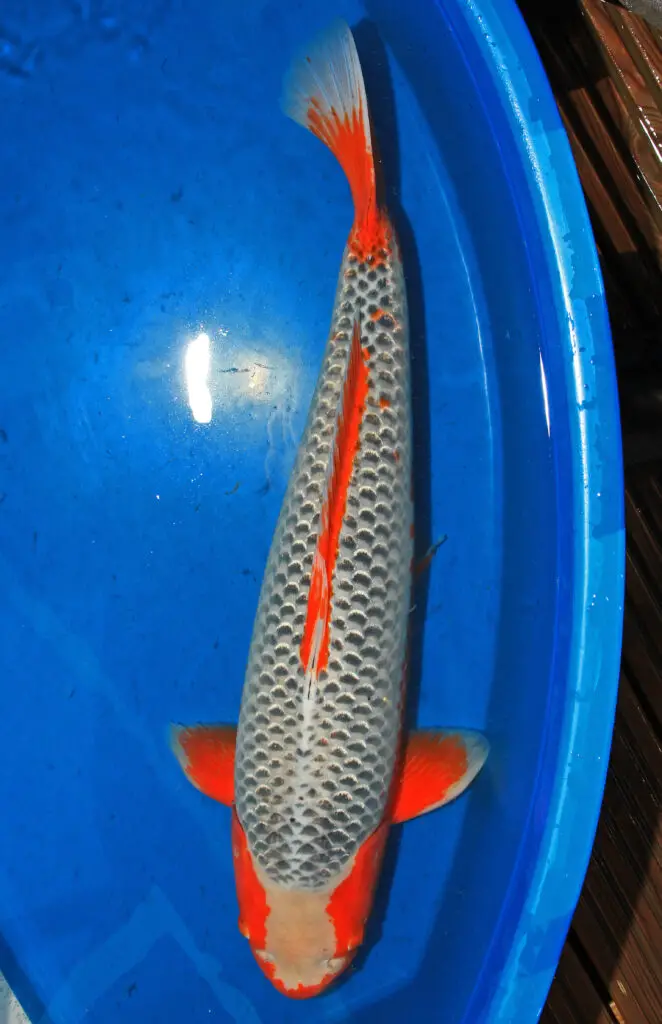
Due to their reputation as one of the oldest koi variants and their use in cross-breeding through the centuries, most variants of Asagi koi are considered to be pretty standard.
However, the popularity of Asagi koi has increased in recent years, leading to a host of unique and rare sub-variants of Asagi koi (see below for further details.)
How Many Variants Of Asagi Koi Are There?
While there is no definitive number of Asagi koi sub-variants, with new variants being periodically bred, the following are seven of the most well-known and sought-after Asagi koi:
- Konjo Asagi,
- Narumi Asagi,
- Gin Rin Asagi,
- Hi Asagi,
- Akebi Asagi,
- Yuki Asagi, and
- Taki Asagi.
1. Konjo Asagi Koi
As one of two primary variants of Asagi koi, Konjo Asagi has the basic coloring and reticulation of blue-black, evenly netted scales.
2. Narumi Asagi Koi
Narumi Asagi Koi is the second primary variant of Asagi koi. Narumi Asagi has lighter shades of blue netted coloring and reticulations.
Konjo Asagi and Narumi Asagi have stronger links to wild carp and are the basis upon which other variants of Asagi koi originate.
3. Gin Rin Asagi Koi
Sporting metallic, silver-black reticulation and netting, as opposed to the blueish tint typically associated with Asagi koi, Gin Rin Asagi generally are an offshoot of the Konjo Asagi variant.
4. Hi Asagi Koi
As the name implies, Hi Asagi Koi is Asagi koi with a notable increase of the color hi across the entirety of their body. Although it can be challenging to identify this koi as Asagi koi due to its unique color pattern, it retains the signature blue-black netting and reticulation on its black.
However, the inclusion of the hi-color makes this iconic feature appear more maroon in color.
5. Akebi Asagi Koi
Sometimes referred to as Mizu Asagi, Akebi Asagi koi are highly sought after for their light-grey netting and reticulation on their back.
6. Yuki Asagi Koi
Commonly referred to as the Snowflake Asagi, Yuki Asagi Koi are a recent and rare variant of Asagi koi that are known for their pure white netted patterns and reticulation on their back.
When coupled with the hi-color on their bellies and pectoral fin joints, the Snowflake Asagi forgoes the symbolism of a rising sun in favor of falling leaves during the first snowfall in Fall.
7. Taki Asagi Koi
Although Taki Asagi mirrors the coloration of Konjo Asagi, their primary differentiating feature is the horizontal white line dividing their blue-black netting and reticulation on their back from their hi-color bellies.
How Much Does Asagi Koi Cost?

Despite being relatively common variants of koi, larger and more unique variants of Asagi koi can fetch a high price!
Although small, juvenile Asagi koi retail for approximately $50, larger and more mature variants of unique Asagi koi can cost hundreds of dollars.
One of the most expensive variants of Asagi koi is mature, flawless Gin Rin Asagi koi. Gin Rin Asagi koi have been known to fetch upward of $1000 if they have symmetric coloring, reticulation, and net patterns.
Hi Asagi, despite being unique koi, typically fetch a lower price among collectors of koi that may not consider them accurate reflections of the Asagi koi variant.
How To Care For Asagi Koi?

The three main considerations when caring for Asagi koi are:
- Water quality,
- Temperature,
- Diet.
1. Water Quality
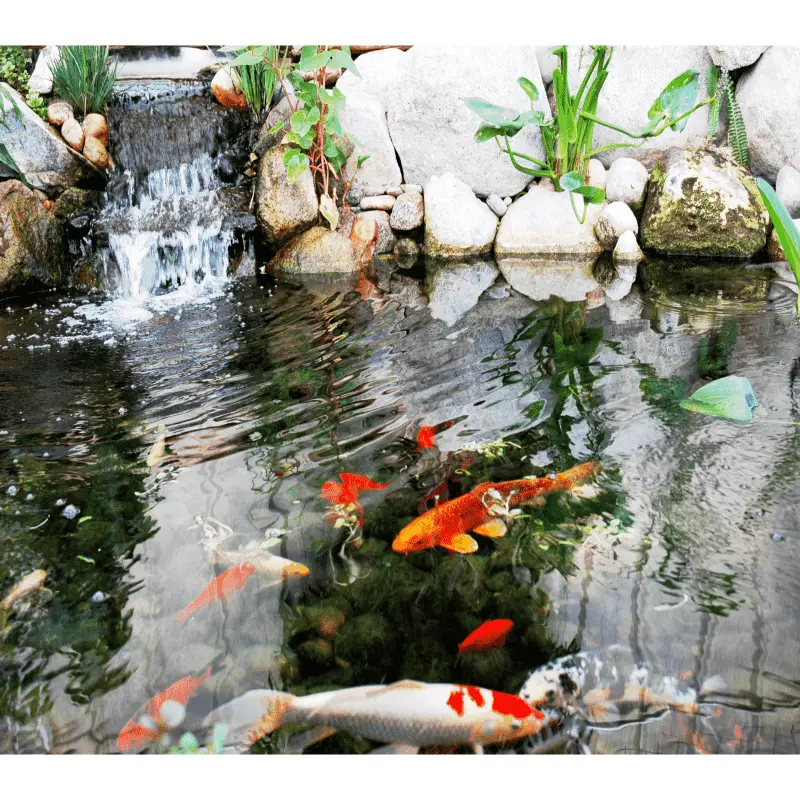
One of the reasons why you should monitor water quality when caring for Asagi koi is due to the result of water hardness on the coloration of Asagi koi.
Namely, that lousy water quality and hardness will change the blue color and reticulation on their backs to a darker color, which results in the masking of their unique netting pattern at the expense of lighter shades of blue that highlight individual scales.
Therefore, you should monitor their water quality subject to the approximate measurements:
- Temperature: 50F to 78F,
- pH balance: 7.5 to 8.5,
- Dissolved oxygen: 7 parts per million,
- Salinity: 0.05 to 0.15 parts per trillion,
- Total dissolved solids: 75 to 100 parts per million.
2. Temperature
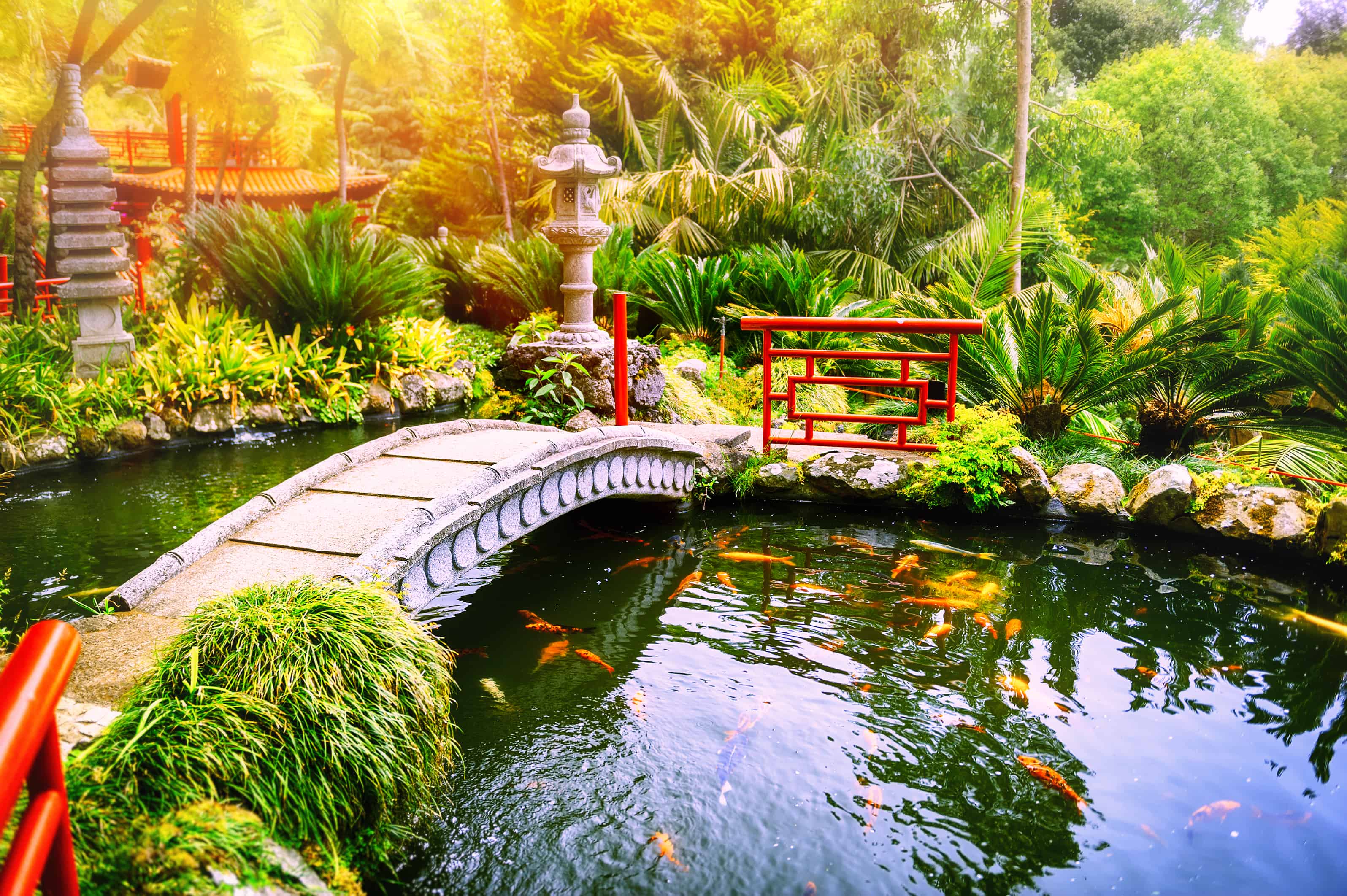
As mentioned above, the ideal water temperature should be between 50F and 78F. However, it is also vital that your pond has ample shade to protect your koi from direct sun exposure and that the pond is deep enough to allow koi to swim to colder temperatures as/when needed.
3. Diet

Because Asagi koi are direct descendants of wild carp, they tend to have more varied diets and tougher dispositions compared to other koi variants.
However, in the event that you notice discoloration, it is recommended you include color enhancers in their diet to promote the blue hues in the netting and reticulation on their backs.
Just bear in mind that the inclusion of color enhancers may result in certain white areas of the Asagi koi, such as their heads, taking on a slightly yellow tinge if overfed.
How To Breed Asagi Koi?

Breeding Asagi koi can be a complicated process for amateur breeders, as their inherent biological nature promotes cross-breeding and variation among their offspring. Furthermore, even the enclosed breeding among purely Asagi koi can result in juvenile koi with dark netting and reticulation, as well as increased hi-color on their head or fins.
That being said, a trial-and-error approach for amateur breeders can result in juveniles that may sport the features of some of the multiple variants of Asagi koi. Just be prepared for numerous variations of colors, symmetry, and patterns!
Conclusion
In conclusion, although Asagi koi is a common variant of koi that may be overlooked by some collectors. Asagi koi are hardy, resilient koi whose docile natures, in combination with their unique blue-black patterns and reticulation, make them a welcome addition to any koi pond!
Furthermore, there is enough variety in terms of their coloring and price points to suit beginner, intermediate, and experienced koi enthusiasts.
References
https://en.wikipedia.org/wiki/Koi
https://www.slideshare.net/elladimaiwat/major-varieties-of-koi-fish

